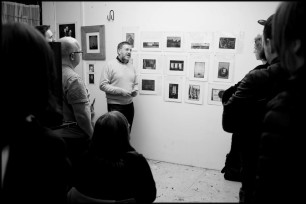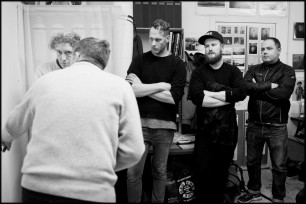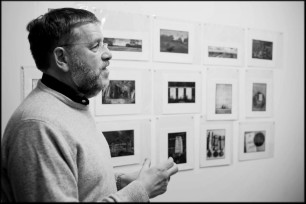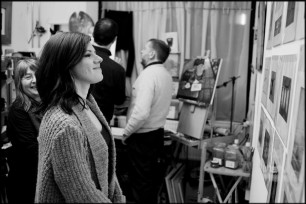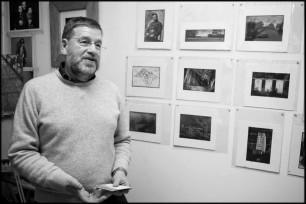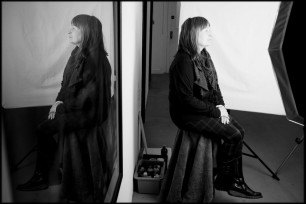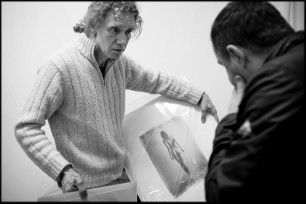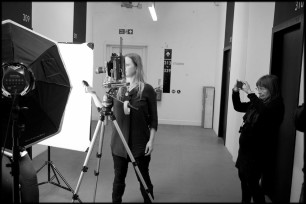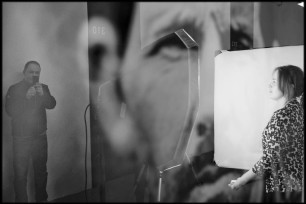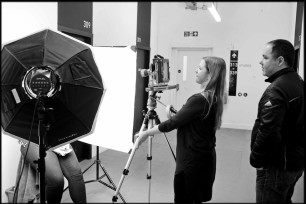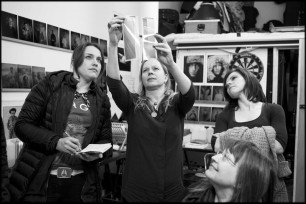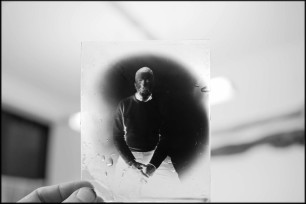IV was nice – we watched a movie and ate sweets. Lots of sweets.
We watched The Salt of the Earth, a documentary about Sebastiao Salgado. Well worth a watch. I love the work of Salgado – it is actually quite remarkable what he has achieved in life. I was slightly disappointed with the film, how it was made, but his work and his integrity and commitment are all that I can really remember right now.
Probably worth linking to a TED Talk he did too. The Silent Drama of Photography. A truly remarkable man.
Gathering V was great. Good soup, more sweets – from Poland (thanks Martyna) – to accompany an evening of alternative photographic projects and processes.
When Douglas Thompson first showed me his project I found the background story to be incredible. I’ve copied what Douglas says below, but unless it’s not clear he and his brother have been investigating and retracing the movements of his grandfathers brother – Jim Forrester – who was tragically killed during WWI and his body was never recovered.
Following recently made available war records and maps Douglas and his brother were able to travel to his last known location near Arras in France. They stumbled upon a small grave site and have found a grave of an unknown soldier of the HLI – and believe it could actually be the grave of Jim Forrester.
I travel to Arras at least twice a year on the cycle trips I do and have been moved to tears by the scale of the war grave sites en-route. I can’t imagine what Douglas and his brother must have felt discovering this small resting place in an isolated woodland. Incredible.
Douglas has recorded his journey by photographing landscapes, details and personal effects and then producing a beautiful set of platinum prints.
Thanks again Douglas for presenting this work and for the following narrative: –
This first world war project was both a personal memorial, closely relevant to my family, but also a story familiar to many, many families throughout Europe and beyond.
I grew up with knowledge of James Forrester, my Grandfather’s brother. Jim volunteered for the Highland Light Infantry in Glasgow just three weeks after the start of World War One in August 1914. He fought in several major battles until his death at the battle of Arras on 25th April 1917.
Like so many young men, he embarked on a patriotic adventure which seemed exciting and very different from his occupation as a boiler maker in Glasgow. The sense of adventure dissipated rapidly as the full horrors of trench warfare became all too real.
As with so many men, his body was never recovered or identified, all that remained was his name on a Commonwealth War Graves memorial in Arras, France. Even this small memorial was never shared with the family, as a consequence my brother and I were the first family members to see the inscription and lay a wreath almost one hundred years after James’ death.
For us it was a matter of fulfilling a family promise to maintain his memory and honour his sacrifice. In the course of research on declassified military records, we determined an accurate indication of his last known position in the small village of Tilloy, just a few kilometres east of Arras. We visited the village, the wood where he was positioned and 250 metres beyond, a small Commonwealth War Graveyard with one grave to an unknown H.L.I. soldier. It is not beyond possibility that this was Jim’s grave.
A moving experience and a sense of fulfilling a family commitment in honour of a much loved and never forgotten brother.
After Douglas made his presentation we then had a bit of an experiment making dry plates – and I have to say I loved them. Thanks very much to Iseult from Street Level for introducing me to the process…and for the chemistry…..and for the glass……and for the demo…..and to her lovely wee mum for coming along. I hope we didn’t all bore you too much 🙂
Just this week Iseult showed me a salt print she made from the dry plate of her mum and it is absolutely bootiful!! Love it!!
Maybe she will post a copy here……..
Anyway – a great wee night and thanks to all who made it along!

